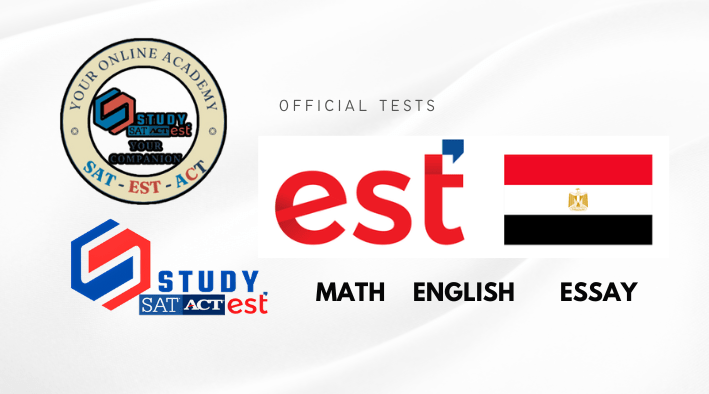Introduction:
The SAT exam is a crucial milestone for many students aspiring to further their education. Recently, the College Board has introduced significant changes to the SAT, making it essential for students to adapt their preparation strategies. In this post, we’ll explore the key features of the New SAT and provide you with valuable resources to ensure your success.

The New SAT: What’s Changed?
The New SAT, introduced in 2016, has undergone several transformations to better assess students’ college readiness. Some of the notable changes include:
- Redesigned Reading and Writing Sections: The New SAT features a more integrated approach to reading comprehension and writing, with a greater emphasis on evidence-based analysis and critical thinking.
- Revised Math Section: The Math section now focuses on fewer topics in greater depth, aligning more closely with the skills and knowledge required for college-level work.
- Elimination of Guessing Penalty: The New SAT no longer penalizes students for incorrect answers, encouraging them to attempt all questions.
- Optional Essay: The essay component of the SAT has become optional, allowing students to choose whether to complete this section based on the requirements of their target colleges.
- Alignment with Common Core Standards: The New SAT has been redesigned to better reflect the skills and knowledge outlined in the Common Core State Standards, which are widely adopted in the United States.
- Increased Focus on Vocabulary in Context: Rather than emphasizing obscure vocabulary words, the New SAT places a greater emphasis on understanding words in the context of passages, reflecting their real-world usage.
By understanding these key changes, students can tailor their preparation strategies to succeed on the New SAT and demonstrate their college readiness to admissions officers.
Preparing for the New SAT: Your Roadmap to Success
Effective preparation is the key to conquering the New SAT. Here are some essential steps to help you get started:
Here are some essential steps to help students get started with preparing for the New SAT:
Preparing for the New SAT: Your Roadmap to Success
- Understand the Test Format:
- Familiarize yourself with the structure and timing of the New SAT, including the sections, question types, and scoring system.
- Explore sample test questions and practice materials to get a feel for the exam’s content and level of difficulty.
- Understand the role of the optional essay section and determine if it’s required by your target colleges.
- Utilize Free Online Resources:
- Explore the College Board’s official SAT website (collegeboard.org) for a wealth of free practice tests, study guides, and test-taking strategies.
- Use Khan Academy’s SAT preparation program (khanacademy.org/sat), which offers personalized, interactive lessons and practice based on your performance.
- Check out free SAT prep resources on websites like Prepscholar (prepscholar.com) and The College Panda (thecollegepanda.com). [Image: Screenshot of a free SAT preparation website]
- Practice, Practice, Practice:
- Take full-length practice tests under timed conditions to simulate the actual exam experience.
- Review your performance and identify areas for improvement, then focus your study efforts accordingly.
- Utilize practice questions, drills, and exercises to strengthen your skills in specific content areas. [Image: Students studying for the SAT]
- Develop a Personalized Study Plan:
- Assess your starting point by taking a diagnostic test to identify your strengths and weaknesses.
- Create a structured study schedule that balances content review, skill development, and practice tests.
- Adjust your plan as you progress, incorporating feedback from your practice test results and performance.
By following these essential steps, students can develop a well-rounded and effective preparation strategy for the New SAT, increasing their chances of achieving their desired score and reaching their educational goals.
“Preparing for the New SAT:
Your Roadmap to Success” with the essential steps to help students get started:
Preparing for the New SAT: Your Roadmap to Success
Effective preparation is the key to conquering the New SAT. Here are some essential steps to help you get started:
- Understand the Test Format:
- Familiarize yourself with the structure and timing of the New SAT, including the sections, question types, and scoring system.
- Explore sample test questions and practice materials to get a feel for the exam’s content and level of difficulty.
- Understand the role of the optional essay section and determine if it’s required by your target colleges.
- Utilize Free Online Resources:
- Explore the College Board’s official SAT website (collegeboard.org) for a wealth of free practice tests, study guides, and test-taking strategies.
- Use Khan Academy’s SAT preparation program (khanacademy.org/sat), which offers personalized, interactive lessons and practice based on your performance.
- Check out free SAT prep resources on websites like Prepscholar (prepscholar.com) and The College Panda (thecollegepanda.com). [Image: Screenshot of a free SAT preparation website]
- Practice, Practice, Practice:
- Take full-length practice tests under timed conditions to simulate the actual exam experience.
- Review your performance and identify areas for improvement, then focus your study efforts accordingly.
- Utilize practice questions, drills, and exercises to strengthen your skills in specific content areas. [Image: Students studying for the SAT]
- Develop a Personalized Study Plan:
- Assess your starting point by taking a diagnostic test to identify your strengths and weaknesses.
- Create a structured study schedule that balances content review, skill development, and practice tests.
- Adjust your plan as you progress, incorporating feedback from your practice test results and performance.
By following these essential steps, students can develop a well-rounded and effective preparation strategy for the New SAT, increasing their chances of achieving their desired score and reaching their educational goals.











